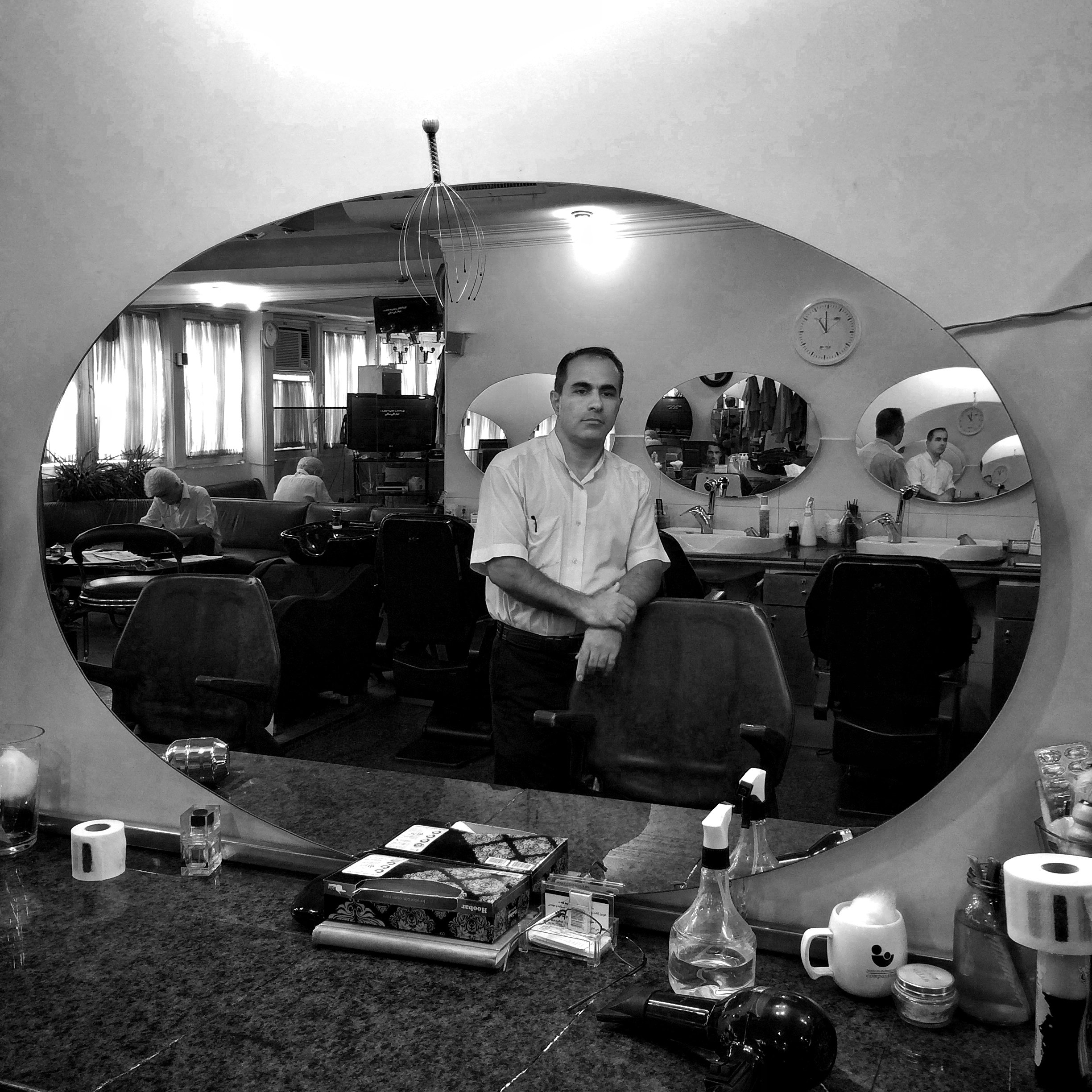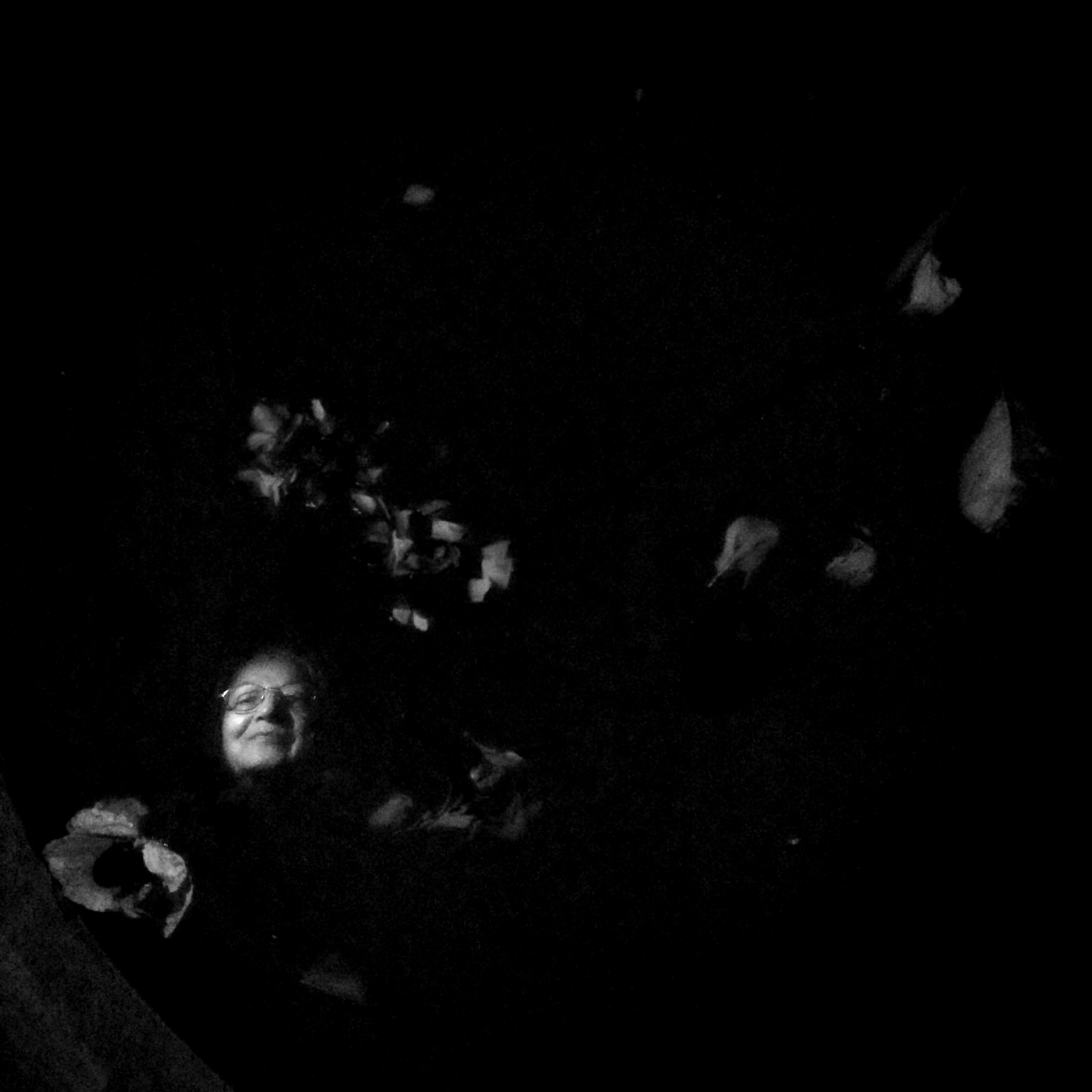As soon as Iran agreed to the nuclear deal in summer of 2015 with the United States and five other countries, Iranians burst into conversation about what difference, if any, the accord would make to their day-to-day lives. In taxis, offices and homes, everyone was talking about it, some expressing optimism, others skepticism.
Inspired by August Sander’s series of portraits of his fellow Germans in the early 20th century, I set out to capture a cross section of people in Tehran and Mashhad in their professional or private spaces. I asked everyone I photographed what the deal and the lifting of a decade of economic sanctions meant for them; their answers became an integral part of my project.
I used my iPhone camera instead of a regular lens because it seemed to make people feel more comfortable and answer more candidly. In each case, I imposed a piece of glass between myself and the subject, or used another reflective surface to cast the setting onto the subject. My intention was to represent the effects of the environment on a person’s life.
Before this project, I had assumed that all Iranians would welcome the deal. But I came to realize that people’s work, beliefs and economic class deeply affected their response. Some have more reason to hope than others. As a butcher in Tehran told me, “I think only rich people will see some changes in their life. Just look at the increase in the price of beef.”
But from my point of view, this deal will give us a safer world.

Marziyeh Mohebbi, a 52-year-old lawyer from Mashhad, and a mother of four: "I walk confidently without fear of war and the suffering of neighboring countries. I see that my children are proud, because they are citizens of a country that invited the world to reconciliation."

Alireza Bakhtiari, the 49-year-old chairman and C.E.O. of one of the largest newspapers in Iran, Donya-e Eqtesad: “The deal will let the press work more smoothly. It will also benefit the society at large, by bringing hope, booming businesses, less poverty and unemployment and more investment in the economy.”

Niloufar Azimian, a 29-year-old fashion designer. Lives in Tehran: "We spent the most important part of our lives in a pessimistic time and it taught us not to get excited after good news. The good part of this agreement is that the world won’t see Iran as a bellicose nation"

Amir Hosseinzadeh, a 57-year-old butcher. Lives in Tehran: "The deal has no effect on my life and gives me no hope for my future, either. I think only rich people will see changes in their life. Just look at the increase in the price of beef."

Parviz Tarafdar, a 46-year-old barber. Lives in Tehran: "I don’t have any hope of changing my life, and the deal affects maybe only 20 percent of society."

Rahman Sanaie, a 35-year-old janitor from a small Kurdish city in western Iran. Lives in Tehran: "Nothing will change in my life, maybe only a slight increase in my salary. I hope it will bring peace for my country."

Mostafa Kazemi, a 28-year old photographer. He serves coffee at a cafe in Tehran to support himself: "If the agreement results in the appreciation of the Rial, I might be able to buy a new camera and take some trips outside of Iran."

Abbas Rezaei, the 32-year-old son of Afghan refugees who was born and raised in Iran: "I never had an Iranian passport but always felt like an Iranian, so this deal will affect me as much as it will affect Iranians."

Sina Golmakani, 27-year-old student from Mashhad who wants to continue his education in diplomatic relations in Hungary, where his girlfriend lives: "This agreement provides Iranian students abroad an easier way to transfer money. Plus, on a larger scale, the deal could bring hope, even if it does not bring instant economic change."

Tayebeh Ghiami, a 74-year-old housewife and mother of four: "Nothing will change in my life, but I have lots of hope. I hope for a good life for my children and grandchildren and also a better future for my country."

Feryal Mostofi, 60 years old. She founded and manages several multinational steel companies in Iran, Britain, France and Hong Kong. Lives in Tehran: "I think the renewed cultural dialogue between Iran and other countries is one of the most important benefits of this agreement. It is useful for Iranian women to come out from this isolation and become more active in business."

Shadmehr Rastin, a 50-year-old screenwriter and architect who lives in Tehran: "I have no hope at all."

Bita Vakili, a 42-year-old painter, and her husband, Mohammad Reza Ebrahimi, a 44-year-old musician. They are from Tehran and share an opinion about the agreement, says Mr. Ebrahimi: "Happiness and hope were our first reactions, but we know very well that changes will not happen quickly. Later on, in the future, we will have more peace and security. In our fields, peace and security will lead to more creativity and flourishing of art"

Saba, an 18-year-old guy student: "This agreement may lead to more openness in Iran."

Self-portrait of the photographer, 34 years old: "The nuclear agreement reminds me of the 13th-century Persian poet Saadi, whose writing decorates the hall of the United Nations building: Human beings are members of a whole / In creation of one essence and soul. / If one member is afflicted with pain / Other members uneasy will remain."